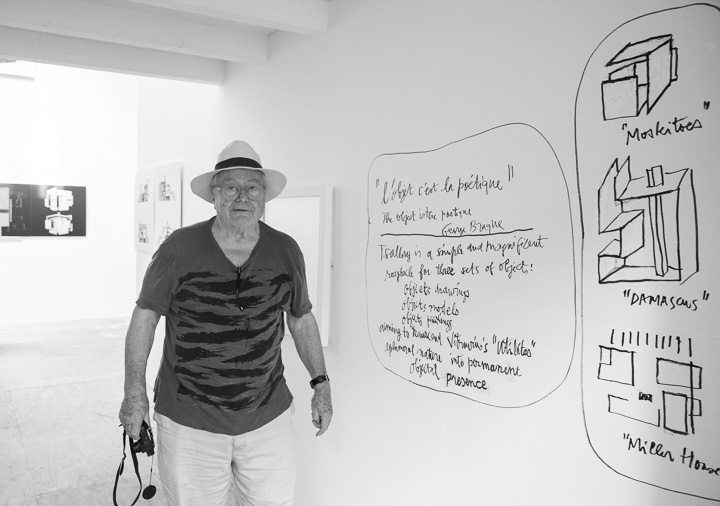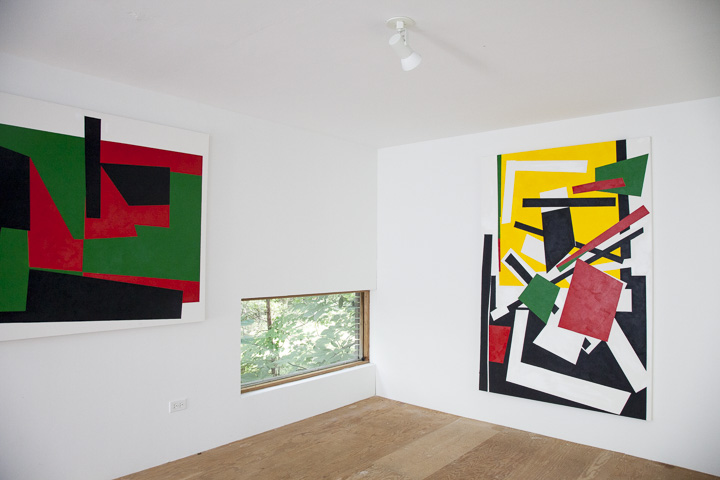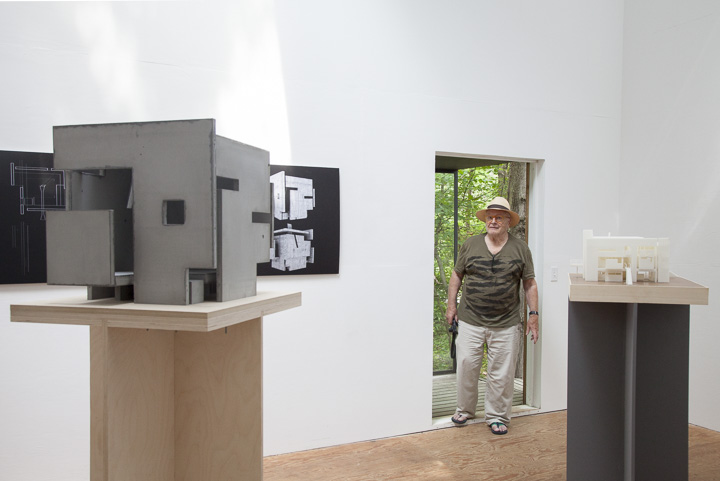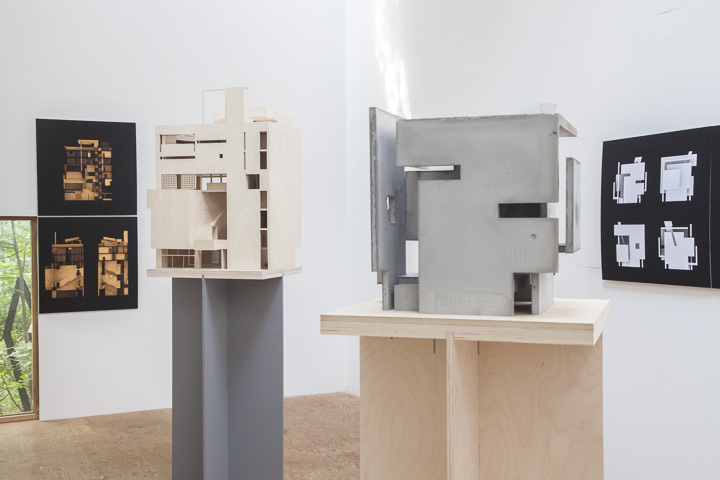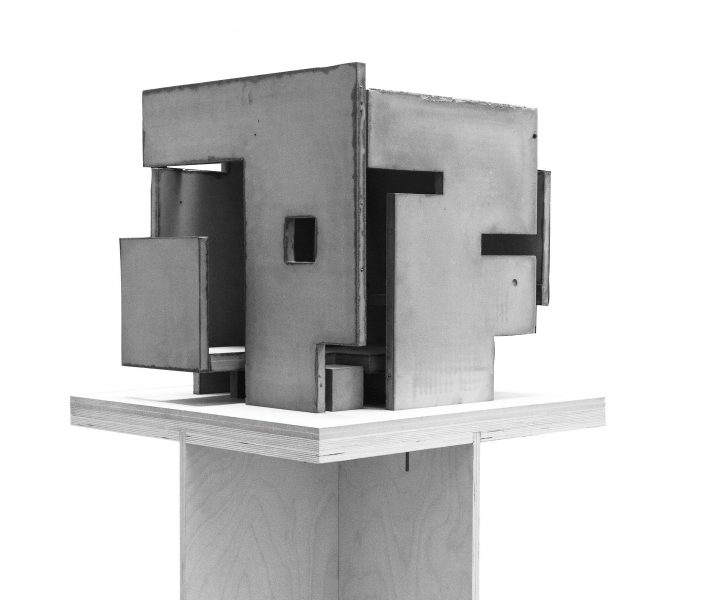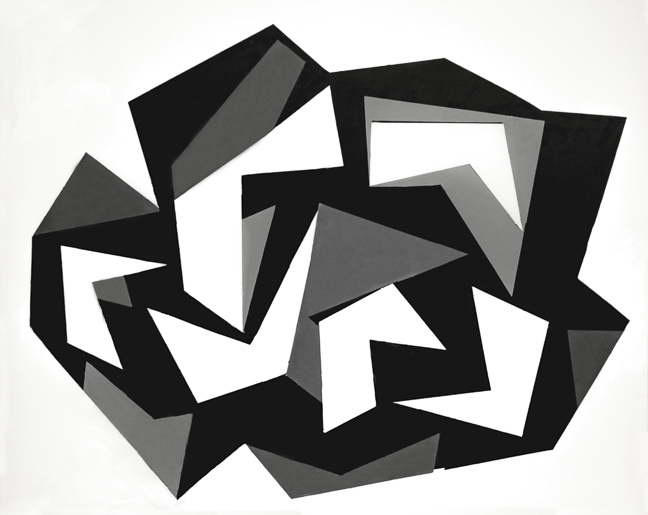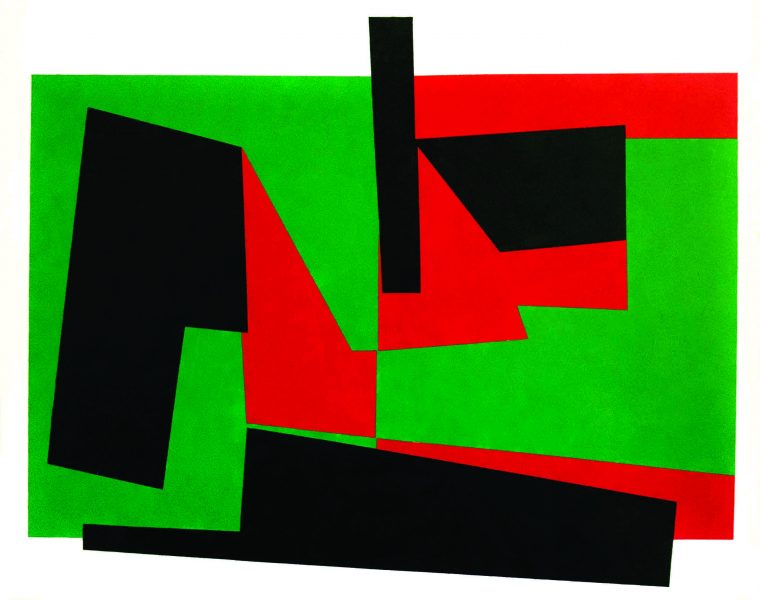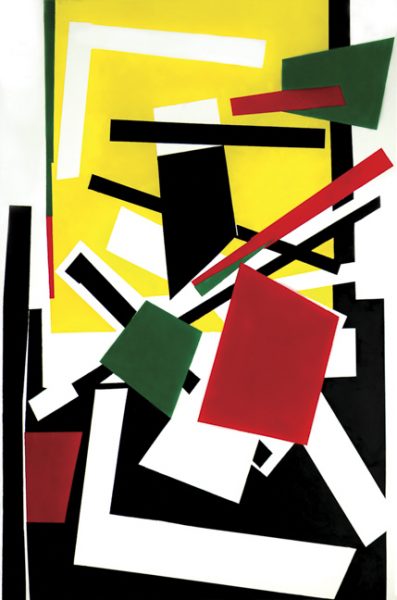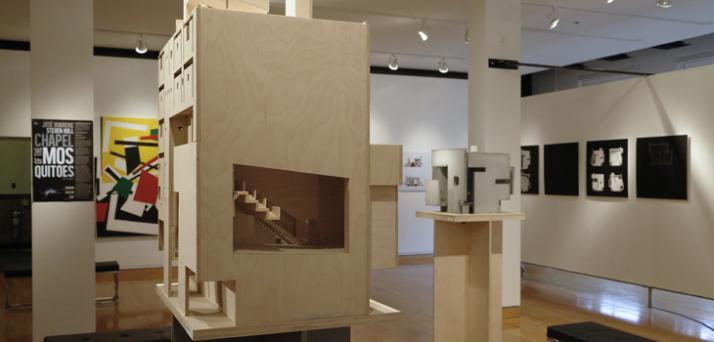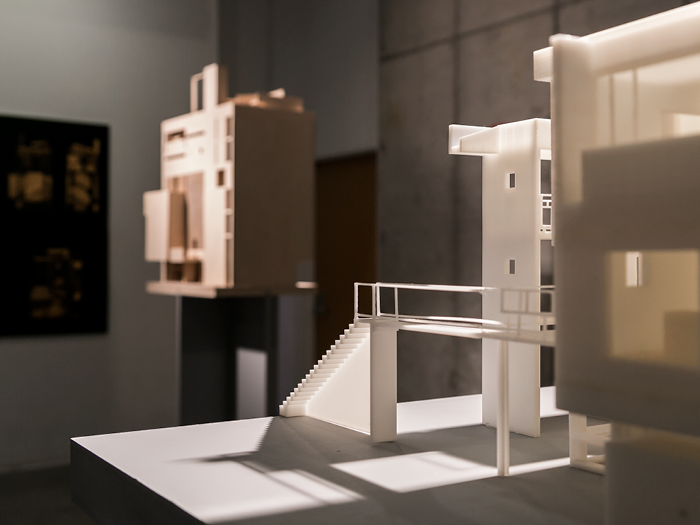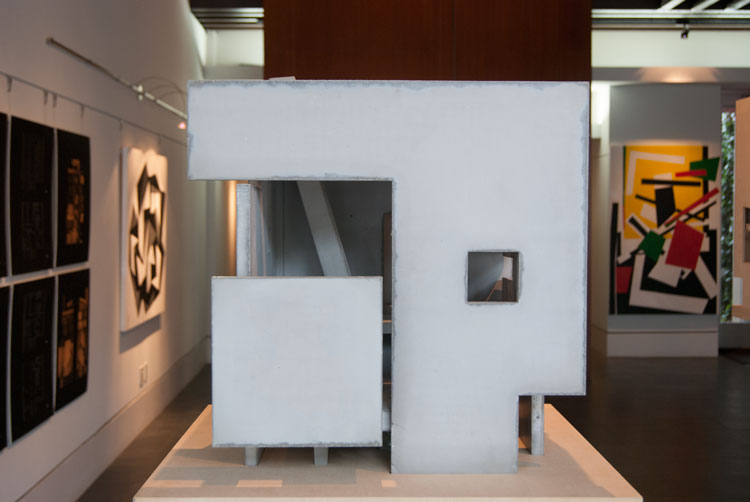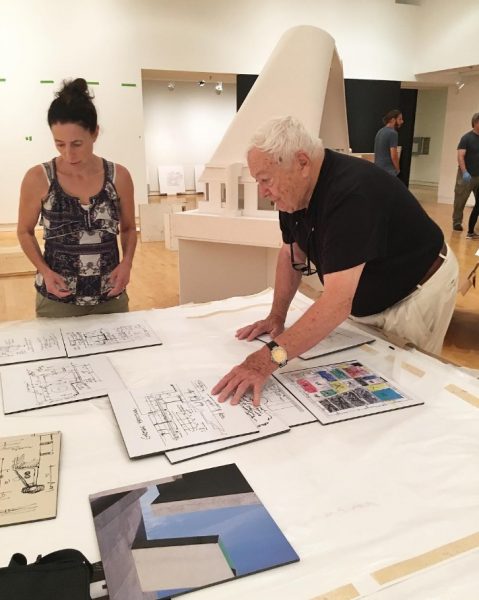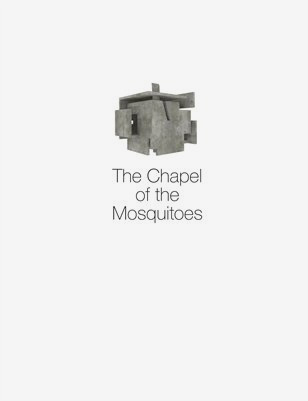‘T’ Space Gallery presents José Oubrerie’s month-long solo exhibition, featuring three paintings and three architectural projects, the Damascus (1972), Miller House (1991), and Chapel of the Mosquitoes (2015). The Damascus project is conceived of as a continuous interior surface. Its enclosed, continuous interiority relates in part to the formal complexity of Le Corbusier’s Villa La Roche, and in part, to a new “Moebiusian” architectural topology. Miller House, the antithesis to the Damascus project, is concerned with the exterior fragmentation — “the explosion of the cube” — reminiscent of Theo van Doesburg’s diagrams. Every one of its fragments is a building by itself, autonomous, yet interrelated to the others. Damascus and Miller House constitute two opposite spatial investigations whose formal conflicting approaches are synthesized in The Chapel of the Mosquitoes. The Chapel becomes a contraction of these two projects, and at the same time, possesses attributes of both. José Oubrerie’s exhibition featuring paintings, plans, and models of The Chapel of the Mosquitoes has travelled extensively to Knowlton School’s Banvard Gallery, Sci-Arc Kappe Library in Los Angeles, Carnegie Mellon in Pittsburgh since its conception in Rhinebeck, New York and and been featured in numerous articles.
‘T’ Space commissions José Oubrerie to realize The Chapel of the Mosquitoes on T2 Reserve. The simple but beautifully transformative architectural installation will serve as an educational case study for students, architects, artists, and enthusiasts.
The realized structure will be concrete with a diagonal light-water conduit that pierces from roof to floor. The conduit is a contemporary interpretation of a ladder in a kiva — a traditional round Pueblo Indian form — joining the sky and the earth. The Chapel’s ground is visible and the floor sometimes retracts; practically entering inside or reciprocally, the floor extends outside. In addition to the polarities of continuity and fragmentation, other elemental binaries such as the coexistence of interior and exterior, the connection between sky and earth, or the effect of sunlight and rainwater running through the conduit are carefully considered in relationship to the project site.
–
The next exhibition at ‘T’ Space, inaugurated on July 11th, was devoted to the work of architect José Oubrerie. In addition to three of his paintings—geometric abstractions built of flat, angular forms—there were drawings and beautifully finished models of three major projects. The earliest is the French Cultural Center, in Damascus, Syria, realized in 1972. A protégé of Le Corbusier, Oubrerie reimagined the flowing structure of his mentor’s Villa La Roche in constructing the interior of the Cultural Center. Then, in the Miller House, built in Lexington, Kentucky in 1991, he differentiated the interior into zones at once joined and structurally distinct. Throughout his career Oubrerie has contrasted unity with fragmentation—a set of options integrated with ebullient savoir faire in his paintings and, at the scale of architecture, in the design of The Chapel of the Mosquitoes, which he designed this year for a site in Dutchess County, New York. The process of integration continued on the day of this exhibition’s opening, as flautist Patricia Zuber and percussionist Greg Zuber gave stunning performances of Le Merle Noir, by Olivier Messiaen, and a composition by Iannis Xenakis entitled Dmaathen.
— Carter Ratcliff, 2015




